➊ First composition: Find or take a photograph of an object or person, which will be the dominant visual in the final composition. Then find or take photographs of related images, for example: a person (dominant visual) and subordinate visuals: a suitcase, an umbrella, a puddle, a dog, and a fire hydrant. Convert all the photos into silhouettes.
➋ Build a composition around one dominant visual (using size, shape, color, or value contrast), where all other graphic elements form relation- ships with that dominant visual.
Example:
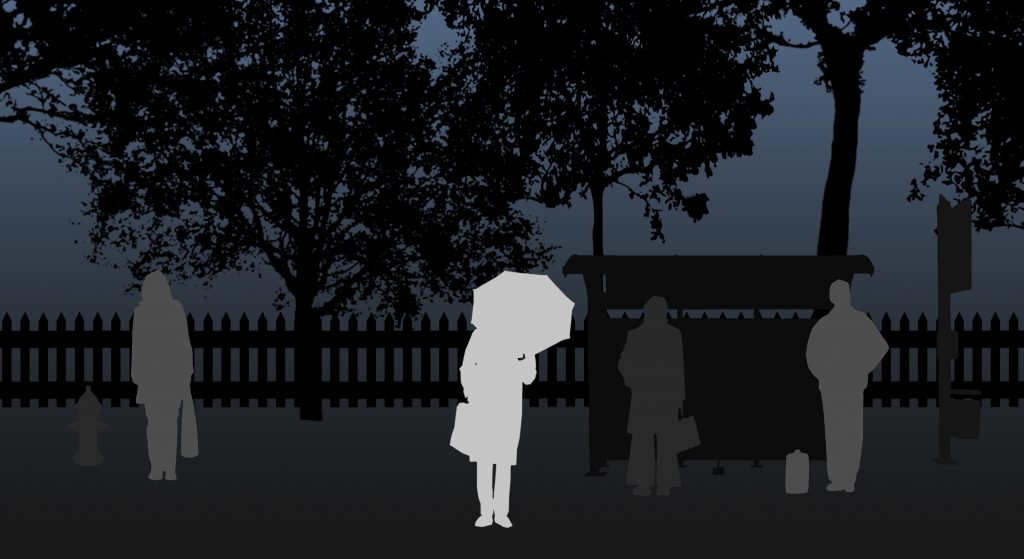
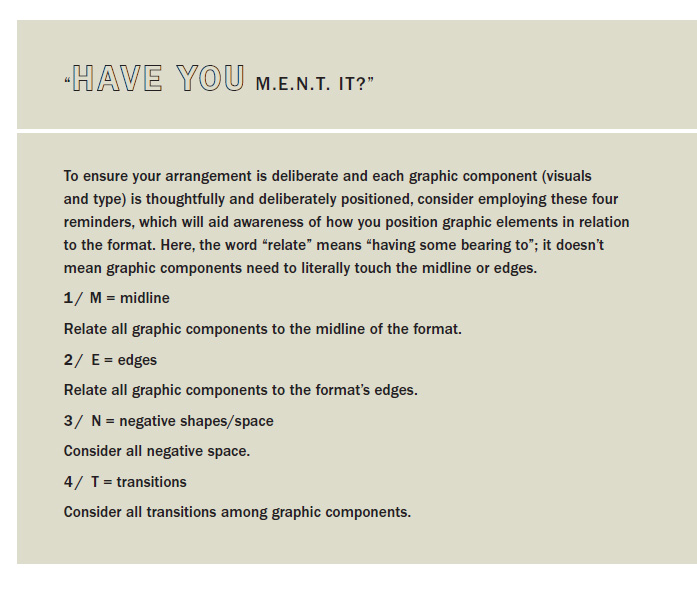
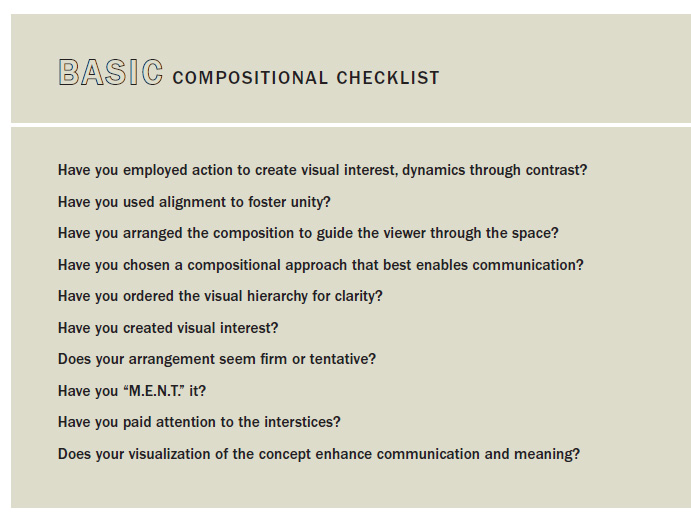
➌ Second composition: using the same silhouettes, now build a composition where there is no single overtly dominant visual; here relationships are built among several shapes or forms through some unifying principle. No element dominates. In a multiple composition, all movements have equal or close to equal force.
Example:
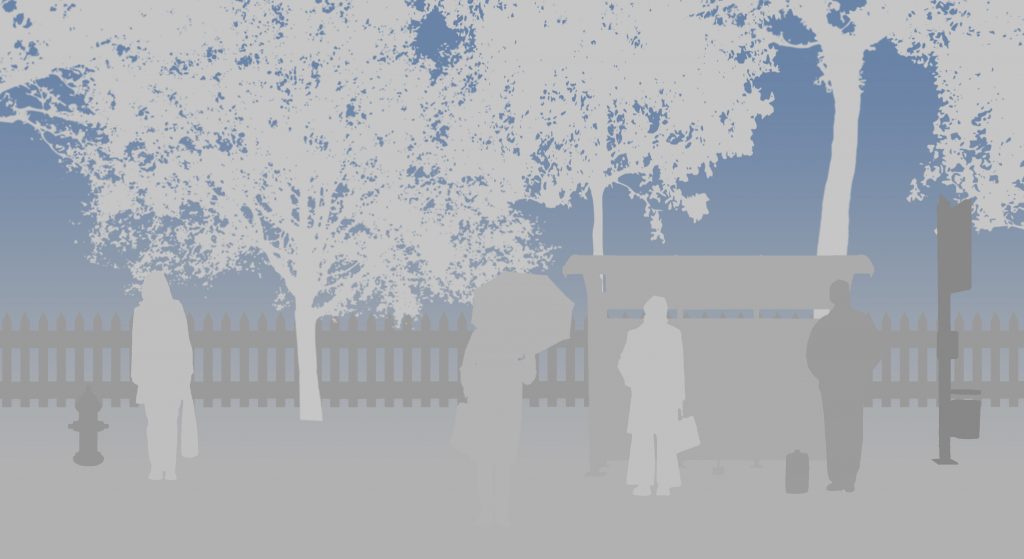
➍ Compare the graphic space in both of these compositions.
➊ Find photographs that commemorate or represent important moments in your own life or in the life of a country’s president. Scan the photos.
➋ Write text that contextualizes or complements the images.
➌ Design a basic modular grid. Grids organize con- tent. First, design a simple three- or four-column grid. Add horizontal flowlines to create grid modules. Grid modules are the individual units cre- ated by the intersection of the vertical column and horizontal flowlines.
➍ Place type or images in a grid module. As a point of departure to learn about the purpose and aesthetic of utilizing a modular grid, do not break the grid modules.
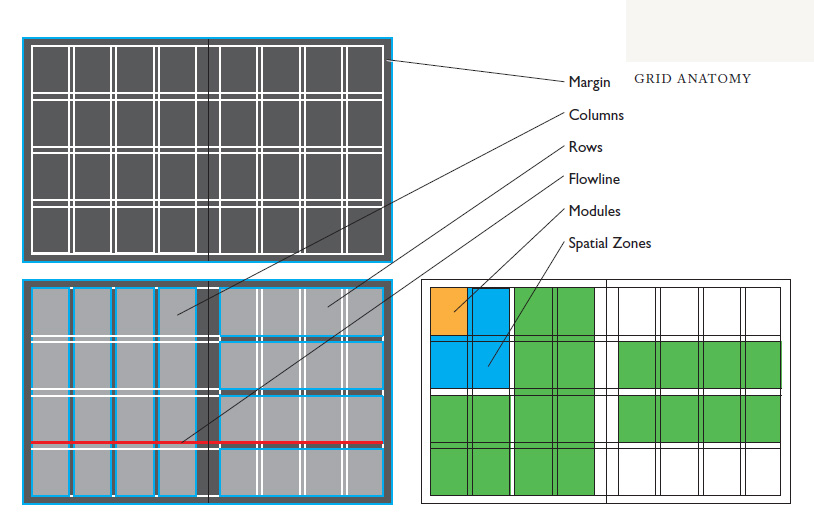
➎ Use the grid for a three-page history.
</span>